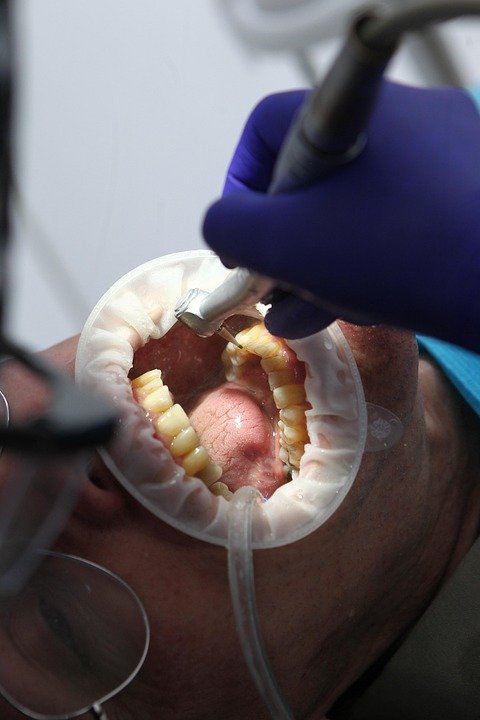What are the best SEO strategies for dentists?
Okay, so I’m a dentist, and I’m really struggling to get my practice to show up higher in Google search results. I’ve got a website, but it’s pretty basic, and I’m guessing my SEO is practically non-existent. I see other dental practices in my area ranking really well, and I want to know how they’re doing it!
Specifically, I’m interested in strategies that are actually effective right now. I’ve read some older articles on SEO, and they seem outdated.
What are the best SEO strategies for dentists in 2024? I’m talking about things like:
- Keyword research: What kinds of keywords should I be focusing on? (e.g., "dentist near me," "teeth whitening [city]," "emergency dentist [city]")? How do I even find the right keywords?
- On-page SEO: What’s the best way to optimize my website content and structure for search engines? Things like title tags, meta descriptions, and headings…how important are they really?
- Local SEO: I know Google Maps is super important. How do I optimize my Google Business Profile (GBP) to get more visibility? What about local citations?
- Link building: Is link building still relevant? If so, how do I get other websites to link to my practice’s website?
- Content marketing: Should I be blogging? If so, what kind of content should I be creating?
- Mobile Optimization: Is this still a big deal? I assume so, but want to be sure.
- Reputation Management: How much does online reviews impact rankings? How can I encourage patients to leave reviews?
I’m not looking for a quick fix. I understand SEO takes time and effort. But I want to make sure I’m focusing on the right strategies to get the best possible results. I’m especially interested in hearing about strategies that are tailored specifically for the dental industry. Thanks!
Answer
To optimize a dental practice website and improve its search engine ranking, several SEO strategies can be implemented. These strategies encompass technical SEO, on-page SEO, off-page SEO, and local SEO.
I. Technical SEO:
Technical SEO focuses on optimizing the website’s infrastructure to ensure search engines can crawl, index, and understand its content effectively.
-
Website Speed Optimization: Site speed is a critical ranking factor. Dentists should optimize image sizes, leverage browser caching, minimize HTTP requests, and use a content delivery network (CDN) to improve loading times. Tools like Google PageSpeed Insights and GTmetrix can help identify areas for improvement.
-
Mobile-Friendliness: A responsive website design is essential. Websites should adapt seamlessly to different screen sizes (desktops, tablets, and smartphones). Google’s Mobile-Friendly Test tool can be used to check mobile compatibility.
-
Site Architecture: A well-structured website is easier for search engines to crawl and understand. Implement a clear and logical navigation menu, use internal linking to connect related pages, and create an XML sitemap for search engines to index.
-
HTTPS Implementation: Secure the website with an SSL certificate to enable HTTPS. This encrypts data transmitted between the website and users’ browsers, enhancing security and boosting search engine rankings.
-
Schema Markup: Implement structured data markup (Schema.org) to provide search engines with more context about the website’s content. This can improve the appearance of search results and increase click-through rates. Examples include marking up business information (name, address, phone number), services offered, and reviews.
-
Robots.txt Optimization: A
robots.txtfile tells search engine crawlers which parts of the website to crawl or not crawl. Ensure it’s correctly configured to avoid blocking important pages and resources. - Crawlability and Indexability: Verify that the website can be crawled and indexed by search engines. Use Google Search Console to submit a sitemap, identify crawl errors, and monitor indexing status.
II. On-Page SEO:
On-page SEO involves optimizing individual web pages to rank higher in search results for relevant keywords.
-
Keyword Research: Identify relevant keywords that potential patients use when searching for dental services. Use keyword research tools (e.g., Google Keyword Planner, Ahrefs, SEMrush) to find high-volume, low-competition keywords related to dental services (e.g., "teeth whitening [city]", "emergency dentist near me").
-
Title Tag Optimization: Each page should have a unique and descriptive title tag that includes the primary keyword. Keep title tags concise (under 60 characters) and place the keyword closer to the beginning.
-
Meta Description Optimization: Write compelling meta descriptions that summarize the page’s content and entice users to click. Meta descriptions should be unique for each page and include relevant keywords (under 160 characters).
-
Header Tag Optimization (H1-H6): Use header tags (H1, H2, H3, etc.) to structure the content and highlight important headings and subheadings. Include relevant keywords naturally within the header tags. Use only one H1 tag per page to signify the main topic.
-
Content Optimization: Create high-quality, informative, and engaging content that satisfies the user’s search intent. Address common questions, provide valuable information about dental services, and use relevant keywords naturally throughout the content.
-
Image Optimization: Optimize images by compressing them to reduce file size, using descriptive file names (e.g., "teeth-whitening-procedure.jpg"), and adding alt text that describes the image and includes relevant keywords.
-
URL Optimization: Create short, descriptive, and keyword-rich URLs for each page. Use hyphens to separate words and avoid using special characters or long strings of numbers.
- Internal Linking: Link to other relevant pages within the website to improve navigation and distribute link equity. Use descriptive anchor text to indicate the destination page’s topic.
III. Off-Page SEO:
Off-page SEO involves building the website’s authority and reputation through external signals, such as backlinks and social media mentions.
-
Link Building: Acquire high-quality backlinks from reputable websites in the dental or healthcare industry. Strategies for link building include:
- Guest Blogging: Write guest posts for other websites in the dental or healthcare niche and include a link back to the dentist’s website in the author bio or within the content.
- Directory Submissions: Submit the dental practice to relevant online directories, such as Yelp, Healthgrades, and Zocdoc.
- Broken Link Building: Find broken links on other websites and offer to replace them with a link to a relevant page on the dentist’s website.
- Resource Page Link Building: Identify resource pages in the dental industry and offer to contribute a valuable resource or tool in exchange for a link.
-
Social Media Marketing: Promote the dental practice on social media platforms (e.g., Facebook, Instagram, Twitter) to increase brand awareness, drive traffic to the website, and engage with potential patients. Share valuable content, run contests and promotions, and respond to comments and messages promptly.
- Online Reputation Management: Monitor online reviews and respond to both positive and negative feedback. Encourage satisfied patients to leave reviews on platforms like Google My Business, Yelp, and Healthgrades.
IV. Local SEO:
Local SEO focuses on optimizing the website and online presence to attract local patients.
-
Google My Business (GMB) Optimization: Create and optimize a Google My Business profile for the dental practice. Include accurate and up-to-date information, such as the practice’s name, address, phone number (NAP), website URL, hours of operation, and services offered. Choose relevant categories and upload high-quality photos of the practice.
-
NAP Consistency: Ensure that the practice’s name, address, and phone number (NAP) are consistent across all online platforms, including the website, Google My Business profile, online directories, and social media profiles.
-
Local Citations: Build local citations by listing the dental practice in relevant online directories and business listings. Focus on directories that are specific to the dental industry or the local area.
-
Local Keyword Targeting: Target local keywords in website content, title tags, meta descriptions, and blog posts. Include the city or region that the practice serves in relevant keywords (e.g., "dentist in [city]", "orthodontist [city]").
-
Reviews and Ratings: Encourage patients to leave reviews on Google My Business and other review platforms. Positive reviews can improve the practice’s visibility in local search results and build trust with potential patients.
- Schema Markup for Local Business: Implement local business schema markup on the website to provide search engines with more information about the practice’s location, services, and contact details.
By implementing these SEO strategies, dentists can improve their website’s search engine ranking, attract more organic traffic, and ultimately acquire more patients. Consistent monitoring and adaptation to search engine algorithm updates are important for sustained SEO success.


Post Comment